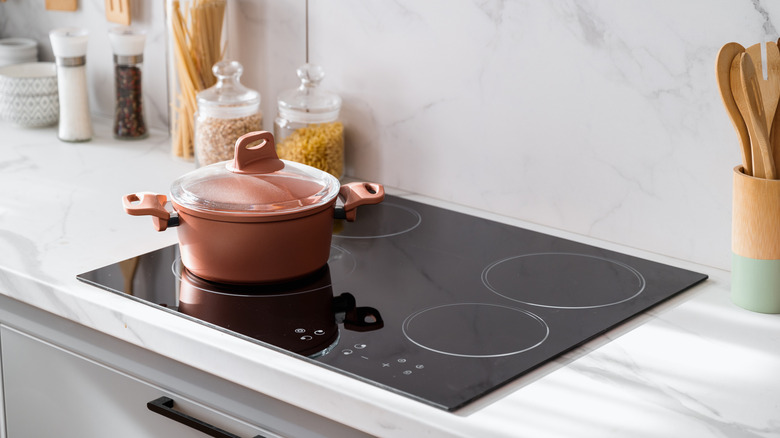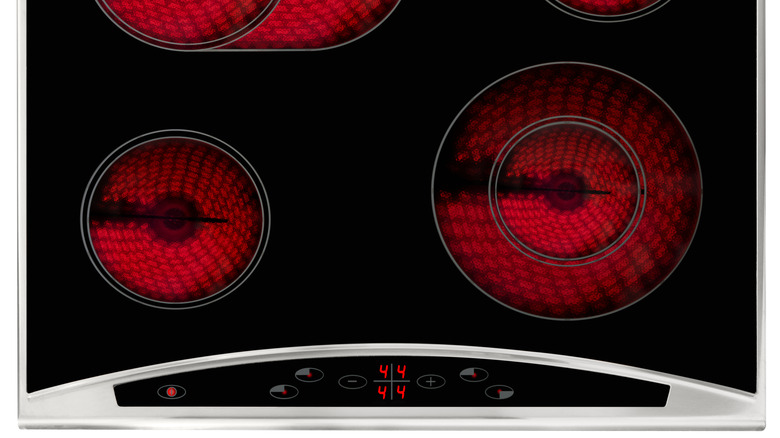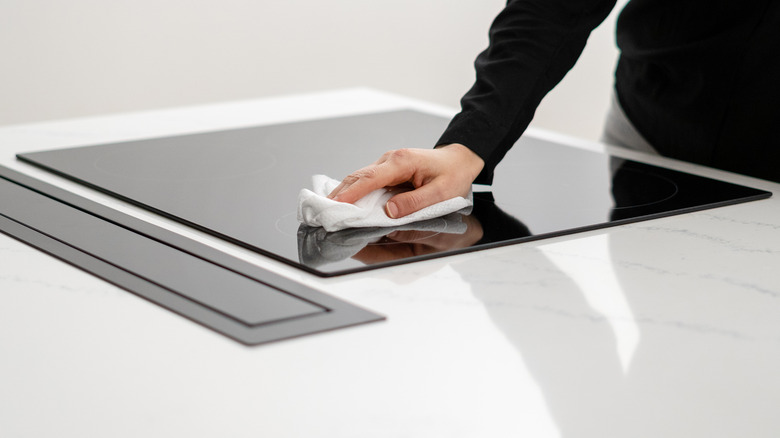Why You Should Never Leave Spills On An Induction Stovetop
You might consider cleaning as distinct from cooking — after all, you can trash the kitchen and still turn out a beautifully-plated meal, and dirty dishes are a consequence of a good meal, not essential to its creation. As it turns out, being lax on cleaning can also effect how well you cook — especially if you've got an induction stovetop. Given the fact that spills will dry and harden when left alone (especially sugary ones), you'll soon wind up with not only a more difficult-to-clean glass induction surface, but an uneven one as well.
This is bad news for a technology dependent on a consistent connection between the induction surface and the cookware being used. A ridge of caramelized sugar (as well as any crumbs or other food debris) will create a gap which reduces the effectiveness of the induction heating process — because it doesn't provide heat in the same way that gas or electric cooktops do.
An appliance with a magnetic personality
In addition to being aesthetically pleasing (and a cinch to clean, given their flat glass surface), induction cooktops are a whole other animal when compared to gas and electric. For starters, induction cooktops don't harm the environment like gas, and they use less energy than electric ones. But more importantly, they don't have burners. Instead, an induction heating surface essentially converts your cookware into a burner through an electromagnetic field. When you turn an induction heating zone on, heat is generated in the magnetic cookware through the friction caused by activated magnets. (Consequently, using the wrong kind of cookware is one of the many mistakes everyone makes when cooking on an induction cooktop.)
Just as aluminum or copper pots aren't magnetized, an induction cooking surface compromised by hardened spills or debris will also disrupt that all-important connection. Essentially, the stronger the magnetic connection, the more effectively the pan will be heated — both in the sense of time and consistency. Which leads us to another common error, which is made when leaving spills on your induction cooktop. Not only do they get harder to clean with time, but they can compromise the effectiveness of your stovetop.
Be careful when cleaning your induction stovetops
Just because induction cooking uses magnets, that doesn't mean the surface doesn't heat up. Typically made of glass (and sometimes ceramic), these stovetop surfaces can get hot from heat transferred back onto them from the cookware. (For this reason, always wait until the surface is cool to the touch before cleaning.) An unhappy side effect of this heat transference is hardened, burnt-on spills, usually formed after several cooking sessions. You're probably going to reach for harsh abrasives or scouring pads to get these off — but don't. These will cause scratches which, if not potentially leading to breakage, will reduce the cooktop's effectiveness.
Avoid using a glass cleaner, too, as those tend to streak. If you're not wiping off a recently-used induction surface with a moist microfiber cloth, comparatively mild cleaning agents like dish soap (not dishwasher soap!), baking soda, and vinegar should do the job nicely. Be sure to clean grease off the touch controls too, lest it prevents them from properly responding. (If your curiosity's been piqued, check out the pros and cons on induction cooktops.)


